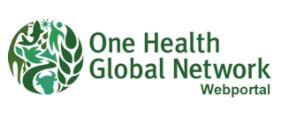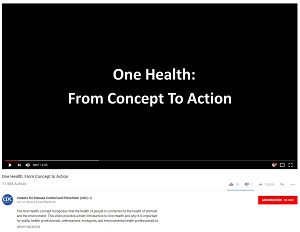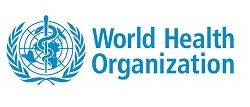 One Health recognizes that the health of humans, animals and ecosystems are interconnected. It involves applying a coordinated, collaborative, multidisciplinary and cross-sectoral approach to address potential or existing risks that originate at the animal-human-ecosystems interface. The aim is to improve health and well-being through the prevention of risks and the mitigation of effects of crises that originate at the interface between humans, animals and their various environments. In less than four years, One Health has gained significant momentum. It is now a movement and it is moving fast.
One Health recognizes that the health of humans, animals and ecosystems are interconnected. It involves applying a coordinated, collaborative, multidisciplinary and cross-sectoral approach to address potential or existing risks that originate at the animal-human-ecosystems interface. The aim is to improve health and well-being through the prevention of risks and the mitigation of effects of crises that originate at the interface between humans, animals and their various environments. In less than four years, One Health has gained significant momentum. It is now a movement and it is moving fast.
Regardless of which of the many definitions of One Health is used, the common theme is collaboration across sectors. Collaborating across sectors that have a direct or indirect impact on health involves thinking and working across silos and optimizing resources and efforts while respecting the autonomy of the various sectors. To improve the effectiveness of the One Health approach, there is a need to establish a better sectoral balance among existing groups and networks, especially between veterinarians and physicians, and to increase the participation of environmental and wildlife health practitioners, as well as social scientists and development actors.
Read the whole article here.
Centers for Disease Control and Prevention (CDC) on One Health
The One Health concept recognizes that the health of people is connected to the health of animals and the environment. CDC uses a One Health approach by working with physicians, veterinarians, ecologists, and many others to monitor and control public health threats and to learn about how diseases spread among people, animals, and the environment.
One Health is not a new concept, but it has become more important in recent years. This is because many factors have changed interactions between people, animals, and our environment. These changes have led to the emergence and reemergence of many diseases.
Find the One Health Basics of the CDC here.
If you want read more on One Health and the CDC click here.
WHO on why we need a One Health Approach
Many of the same microbes infect animals and humans, as they share the eco-systems they live in. Efforts by just one sector cannot prevent or eliminate the problem. For instance, rabies in humans is effectively prevented only by targeting the animal source of the virus (for example, by vaccinating dogs).
Information on influenza viruses circulating in animals is crucial to the selection of viruses for human vaccines for potential influenza pandemics. Drug-resistant microbes can be transmitted between animals and humans through direct contact between animals and humans or through contaminated food, so to effectively contain it, a well-coordinated approach in humans and in animals is required.
Read the whole article here.
Published in GI-Mail 12/2017 (English edition). Sign up for GI-Mail here. 
Tip: More up to date educational events can be found online in the Education Database »medicine & health«.


